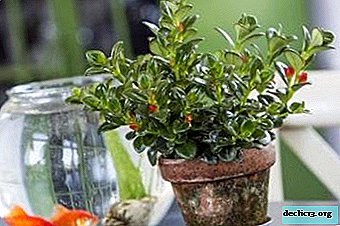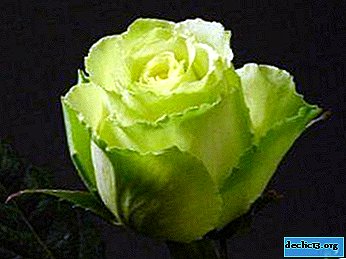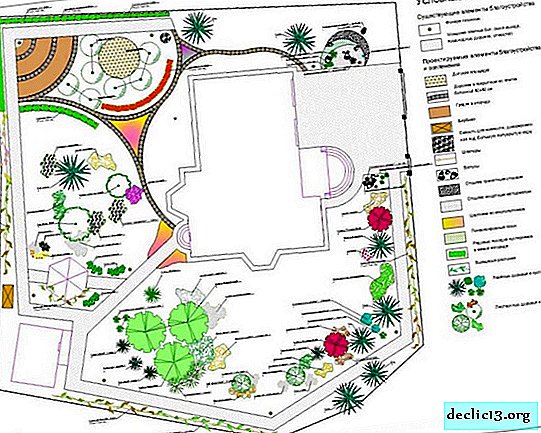Healing and effective Golden Rhododendron. Plant photo

Rhododendrons are perhaps the most beautiful of all flowering shrubs.
In some varieties, the size of the flowers reaches 20 cm, and since they are also collected in inflorescences, one inflorescence looks like a real bouquet.
You can simply cut off this inflorescence and put it in water - such an exotic bouquet in the cut costs a very long time.
And for a gift you can’t imagine an idea better - a similar bouquet can surprise and please.
A brief definition of this type
Rhododendron Golden is a low-growing evergreen species of the Heather family. His flowers are large and very spectacular. It grows in the Far East and in Siberia. There is still a very interesting national name for this shrub that appeared in Siberia - Kashkara.
Detailed description
This is a low shrub with creeping and rising shoots, the height of which does not exceed one meter (mainly 60 cm). His trunk is very bent and twisted. Rhododendron grows in nature on moist rocky slopes, under the canopy of cedar forest, in some places real thickets form.
- Leaves are long, reach 10 cm, slightly wrapped down on their sides. Dense, shiny above dark green, bottom bright, mesh.
- The flowers are large, golden yellow, about 5 cm in diameter. Their shape resembles a wide funnel, they are collected at the ends of the branches for 3-4 pieces. They are located on long pedicels of a reddish hue, pubescent - their length is 2 times the length of the flowers themselves.
- The bark is dark brown.
- The fruit is a seed box with very small seeds, ripens in August.
History of occurrence
Rhododendron Zolotisty was discovered in the 18th century during an academic expedition to the eastern regions of Russia by a German naturalist who was in the Russian service Johann Georg Gmelin.
How is this plant used in life?
This is amazing the plant is very actively used in various fields of life. For example:
- barley on the eye is cured with petals, they are saved from diaper rash of the legs;
- tincture of leaves eliminates headache, irritability and insomnia;
- receive from it an essential oil with a pleasant aroma;
- it is used as a tanning agent in the process of dressing leather (shoe);
- in the household - an excellent remedy for moths.
What's the Difference?
Rhododendron Golden from other species is distinguished by its unusual creeping shape and color of flowers.
Photo
Below you can find a photo of this plant:




Bloom
- When and how - flowering occurs in late spring - early summer, lasts about a month or a halfbut. Flowers form umbrella inflorescences of spectacular yellow - golden color on elongated pedicels.
- Care before and after flowering - after winter, the plant must be carefully checked for pests and fertilized, monitor the moisture of the soil and the air around the bush. After flowering, of course, continue care, but there is one caveat - if you need seeds, then you need to leave part of the peduncles, and remove the rest, if not, remove all peduncles.
- What to do, if it does not bloom - the main reason - the place is unsuccessfully selected. Perhaps it is not enough lighting or too hot, you need to rearrange it in a more comfortable place.
Use in garden design
Rhododendron Golden due to its shape looks very advantageous on the Alpine hills, it is widely used in rocky gardens. Very effective in low hedges.
Step-by-step care instructions
- Seat selection - for this type of Rhododendron, the best placement in indoor conditions will be on the east or west window. There it will be perfectly protected from bright sunlight. You also need to take care that there are no drafts. It is very good if you place several plants nearby - create a comfortable microclimate.
- What should be the soil - the soil should be acidic, loose, moderately moist. It is most reliable to purchase special soil in the store and add sand or perlite to it.
- Landing - Of course, it is best to plant a bush in spring so that it can adapt well and take root in a new place before winter. We pour a little drainage on the bottom of the pot, then soil and plant a plant, just don’t fall asleep the root neck - this is important. Then pour over the settled water and mulch slightly on top. In addition to watering, the plant should be sprayed with soft water, preferably with Epin.
- Temperature - this shrub, although small, but hardy enough, it can withstand frost - 26 degrees. He does not like heat, of course, he is able to tolerate the highest temperature - 28 degrees, but not for a long time. The temperature comfortable for him is from 10 degrees of frost to 18 - 20 degrees of heat. You can learn about frost-resistant rhododendrons in this article.
- Watering - Only well-defended soft water will do. Strong watering is required in the warm season and mandatory spraying of the bush to create high humidity (along with pest prevention).
- Top dressing - overfeeding is harmful, but it is impossible not to fertilize at all. In order for the plant to bloom well, you can apply it in the spring once and again in early autumn. Any organic or mineral fertilizer is well suited - only special for this species.
- Pruning - it is possible to make forming pruning in March - Rhododendron Golden is easy to shape, then the bush will become more compact.
- Transfer - You can transplant during spring and summer after flowering, preferably with a whole lump of land. While the plant is small - it’s better to do this every year, then you can do it less often.
- How to prepare for winter - in order for Rhododendron Zolotisty to comfortably winter, it should be taken out to a cool place (in our apartments it is too hot), he will need a temperature of about 16-18 degrees, not higher.
How to propagate?
Rhododendron Golden is very easily propagated by layering - it has branches after all spread along the ground, but it is also possible with cuttings and seeds.
 Layering - one or two branches are covered with soil (in spring) and watered and sprayed throughout the season. Next spring you can separate the seedlings and plant them yourself.
Layering - one or two branches are covered with soil (in spring) and watered and sprayed throughout the season. Next spring you can separate the seedlings and plant them yourself.- Cuttings - cuttings are cut from the upper parts of the shoots (possible in spring, or in summer after flowering) and root them in a light substrate, they will need to be kept in greenhouse conditions (moisture and heat are needed). When 3 leaves appear, they can be planted in small temporary pots. They need to be wintered in cool conditions, and in early April they can be transplanted into ordinary pots.
- Seeds - it is better to sow them in the spring in a suitable substrate (you can just peat with sand). Create greenhouse conditions, after the emergence of seedlings remove shelter from above. As the leaves appear - transplant into pots. Seed germination is usually very good.
Diseases and Pests
Important! The evergreen varieties of Rhododendrons, unfortunately, are more likely to be attacked by pests and various diseases.The most common pests:
- Rhododendral bug - you need to periodically look at the back of the sheet - it is there that the traces of the presence of this pest are visible - numerous brown spots; treatment with any insecticide will help.
- Spider mite - a lover of dry weather, he also braids with his cobweb the lower side of the leaves, while sucking out the juice; in this case, you need to handle the “Actara”.
- Mealybug - usually a whole “grouping” acts, so the reaction should be immediate; as soon as you notice that the sheet is covered with white coating, urgently treat with Fitoverm or Apolo.
Possible diseases that occur most often:
- Blight rot - poor drainage.
- Rust - remove leaves and treat with Bordeaux fluid.
Prevention of various problems
In order to prevent various diseases and pests, you need to periodically bathe the bush so that the leaves are always clean and spray (at least 2 to 3 times per season) with Bordeaux liquid.
Conclusion
Of course, any Rhododendron is a very strong accent in the garden, no matter how large it is. Rhododendron Golden, of course, is not as easy to maintain as we would like, it is a plant with character. But if he receives what is vital for him, he will “thank” a hundredfold. For the sake of the comfort of such a unique exotic, of course, I want to try, there simply is no more like him.

 Layering - one or two branches are covered with soil (in spring) and watered and sprayed throughout the season. Next spring you can separate the seedlings and plant them yourself.
Layering - one or two branches are covered with soil (in spring) and watered and sprayed throughout the season. Next spring you can separate the seedlings and plant them yourself.















